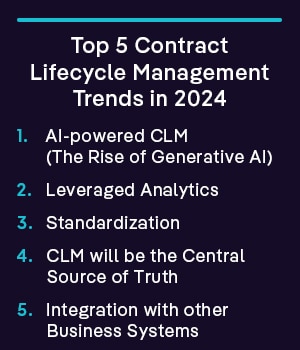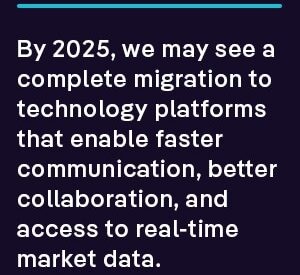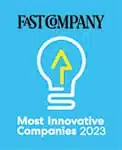
Updated: January 29, 2024
As we approach 2024, the world of legal technology is continuing to evolve and shape the way organizations approach contract management. In particular, contract lifecycle management (CLM) software is leading the charge in revolutionizing traditional contracting processes, helping businesses streamline contract execution, track performance, and ensure compliance with regulations.
So, where is CLM software headed and how can it give your legal department an edge? To give you a better idea of the changing legal tech landscape — and help you improve your contract-related operations — here are the top contract lifecycle management trends you should be aware of in the coming year.
AI-powered CLM (The Continued Rise of Generative AI)
In the constantly evolving world of contract lifecycle management, one key trend that is expected to continue in 2024 is the rise of generative artificial intelligence. With GenAI, organizations can automate and streamline many aspects of the contract lifecycle, from drafting and negotiation to review and approval. As such, it is becoming increasingly crucial for companies to integrate this technology into their existing CLM systems or purchase a new one that has GenAI embedded.
Embedded GenAI
One significant trend that we foresee in 2024 is the incorporation of GenAI into existing CLM systems or the adoption of CLM solutions that come embedded with GenAI. This integration allows businesses to leverage the power of Generative AI seamlessly within their contract management processes. By embedding GenAI into your current CLM system or investing in a CLM solution that already incorporates GenAI, you can unlock a multitude of benefits and enhance your contract management efficiency.
Standalone GenAI Solutions
Integrating a standalone GenAI product on top of your CLM system is another approach that organizations can adopt in 2024. This allows businesses to harness the advanced capabilities of GenAI without overhauling their existing CLM infrastructure. By integrating a standalone GenAI product, legal teams can leverage the power of AI-generated insights, automated contract review, and centralized repository features to streamline their contract management workflows. This approach offers flexibility and scalability, enabling businesses to adapt GenAI to their specific needs.
It is important for companies to carefully consider the integration or purchase of a GenAI-driven CLM system in order to stay ahead in today’s fast-paced business landscape. By embracing this technology, organizations can streamline their contract management processes, improve efficiency and accuracy, and gain a competitive edge. As GenAI continues to evolve and advance in the coming years, it will undoubtedly become an essential tool for businesses looking to optimize their CLM practices.
Leveraged Analytics
The most intelligent contract management is based on constantly evolving technology. That means AI and machine learning (ML), as mentioned above.
AI-driven CLM systems help you to not only automate the creation, review, approval, and management of your contracts and related documents but also gain deeper insights into your day-to-day contracting. And this goes a long way in improving contract workflows and security and minimizing contract risks. This stands in stark contrast to a straightforward contract repository.
In fact, AI and ML are key components of the most advanced CLM systems around today. They are key to contract data classification and extraction processes — and improving the way legal and other departments function altogether.
It is also important to note that AI is not only for Artificial Intelligence, but also Augmented Intelligence (in that it helps humans do better).
Standardizations

This shift towards clear, reusable legal documents has already proven to be a game-changer, improving the efficiency and accessibility of contract management. In fact, by 2025, we may see a complete migration to technology platforms that enable faster communication, better collaboration, and access to real-time market data. This will replace manual processes like redlining and email, streamlining the entire contract creation process.
By adopting a single, widely accepted legal document template (such as DPAs), lawyers and legal professionals can save valuable time, reduce costs, and greatly mitigate risk. It is no longer a matter of simply creating templates and hoping for the best; instead, it requires a strategic approach to ensure consistency and efficiency throughout the entire contract creation process.
Embracing contract standardization is not just a forward-thinking move, but a necessary step towards a more productive and efficient future in the legal field.
CLM will be the Central Source of Truth

One key aspect of a centralized CLM system is the ability to leverage past contracts to inform negotiations. This is where AI-powered tools like Leah for CLM come into play. Leah revolutionizes contract negotiations by streamlining the process and finding the shortest path to signature. She analyzes contracts from the same party and identifies common or similar terms, allowing organizations to identify patterns and leverage them strategically in negotiations.
Integration with Other Business Systems
This trend, while not new, continues to be an ongoing focus in the field of CLM. The ability to integrate CLM systems with other key business systems allows for a holistic and unified approach to contract management. CLM systems are becoming more integrated with other legal technology tools, such as e-discovery, legal research, and data analytics platforms, to create a seamless workflow for legal professionals.
By integrating CLM with other business systems such as ERP (Enterprise Resource Planning) or CRM (Customer Relationship Management), organizations can streamline their operations and foster better collaboration across departments – data can flow seamlessly between systems, eliminating silos and ensuring a single source of truth for contract-related information. It enables organizations to have a complete view of the contract lifecycle, from initial negotiation to execution, renewal, and termination. It also facilitates more accurate reporting, improved compliance, and enhanced visibility into contract performance and obligations.
Furthermore, integration with other business systems opens up opportunities for automation and efficiency gains. For instance, the integration of CLM with ERP systems can automate workflows, invoice generation, and payment tracking, streamlining financial processes related to contracts. Similarly, integrating CLM with CRM systems can enhance customer interactions by providing a comprehensive view of contract terms, pricing, and obligations.
How ContractPodAi Can Enable Your Future
Clearly, the coming year promises some interesting contract lifecycle management trends: CLM solutions that are robust yet connected — contract management software that is as user-friendly as it is cost-effective. In the very near future, this legal technology will only become more commonplace in legal departments and beyond, as legal digital transformation becomes more expansive in organizations.
So, are you ready to streamline and optimize your contract lifecycle management? Do you need a solution that will make sure you have the most efficient audit trails, help you to leverage AI and deep analytics, support you with your digital identification, and increase your organization’s adoption of legal tech? Download a free copy of our white paper, How to Choose a Contract Management Solution. It will help you navigate the CLM landscape in 2024.
To find out how to start your digital transformation journey, contact us today and request a demo.







